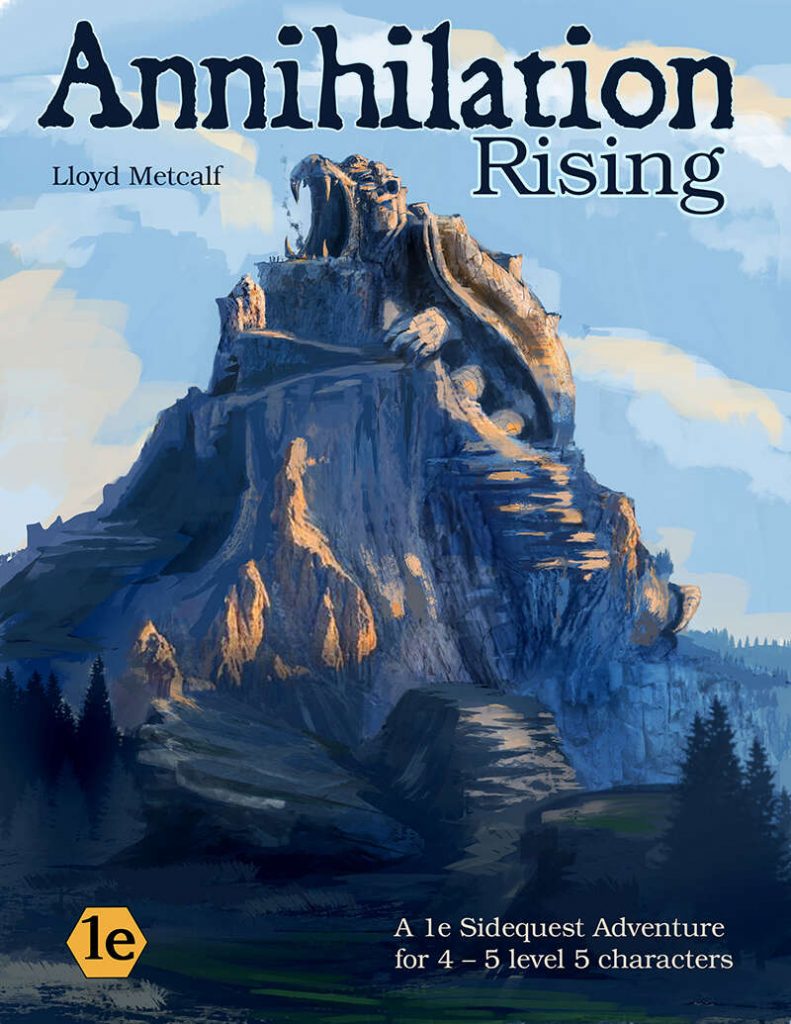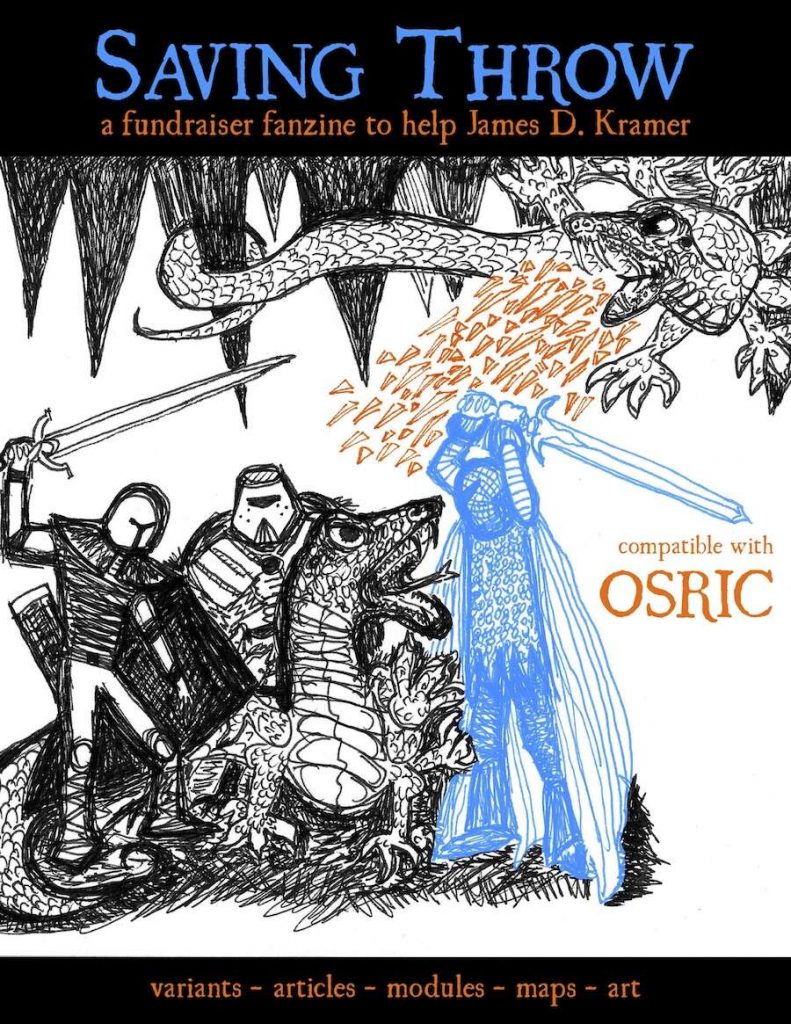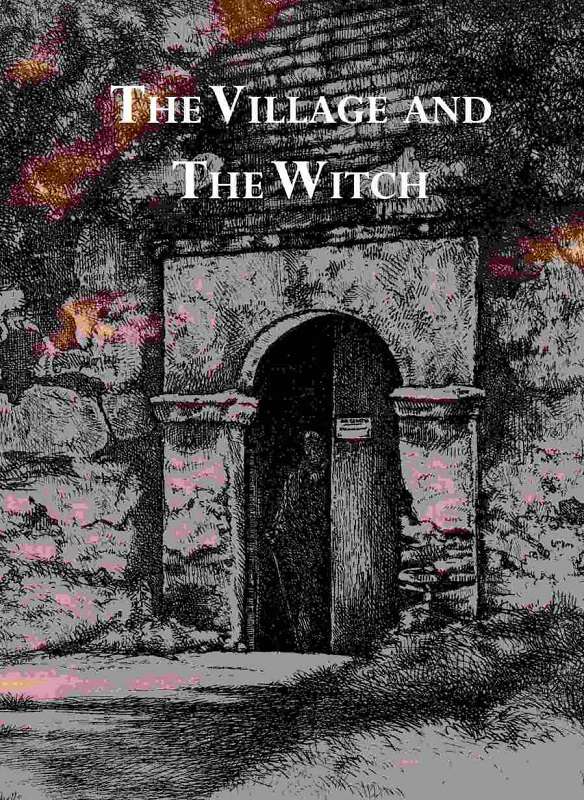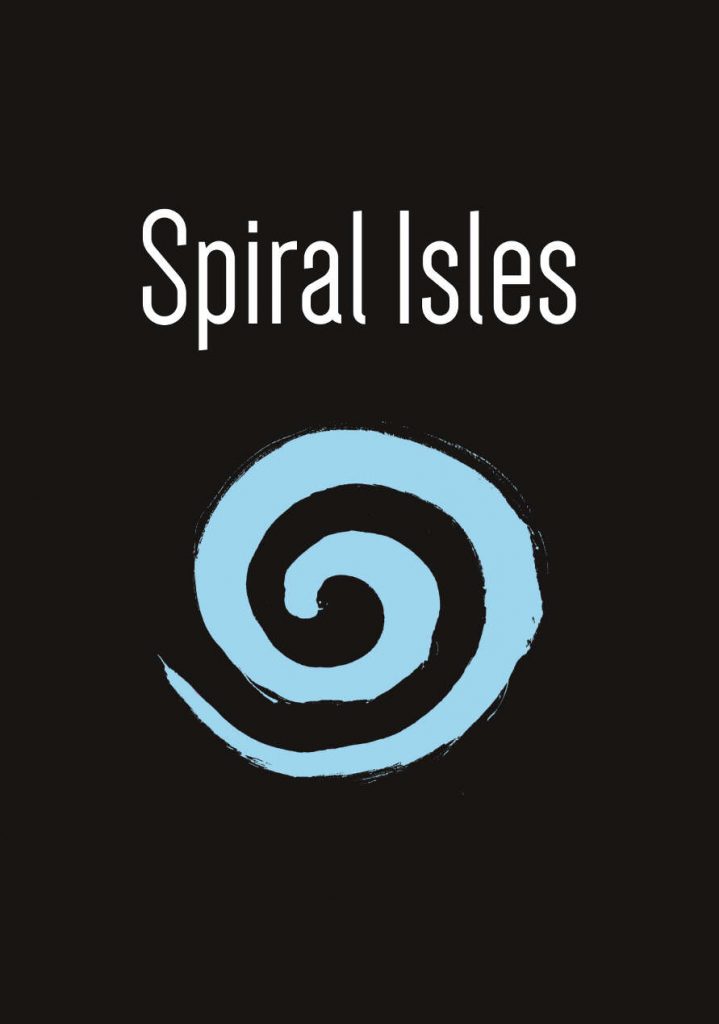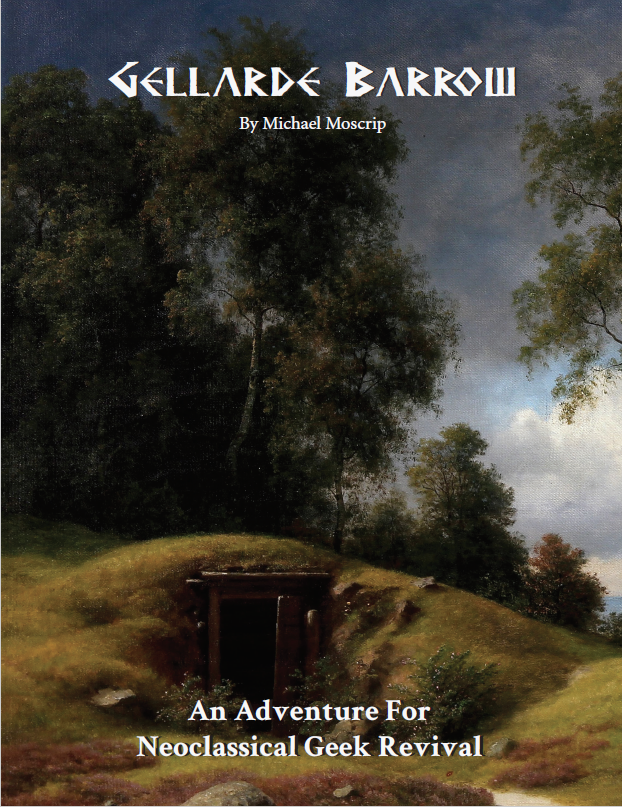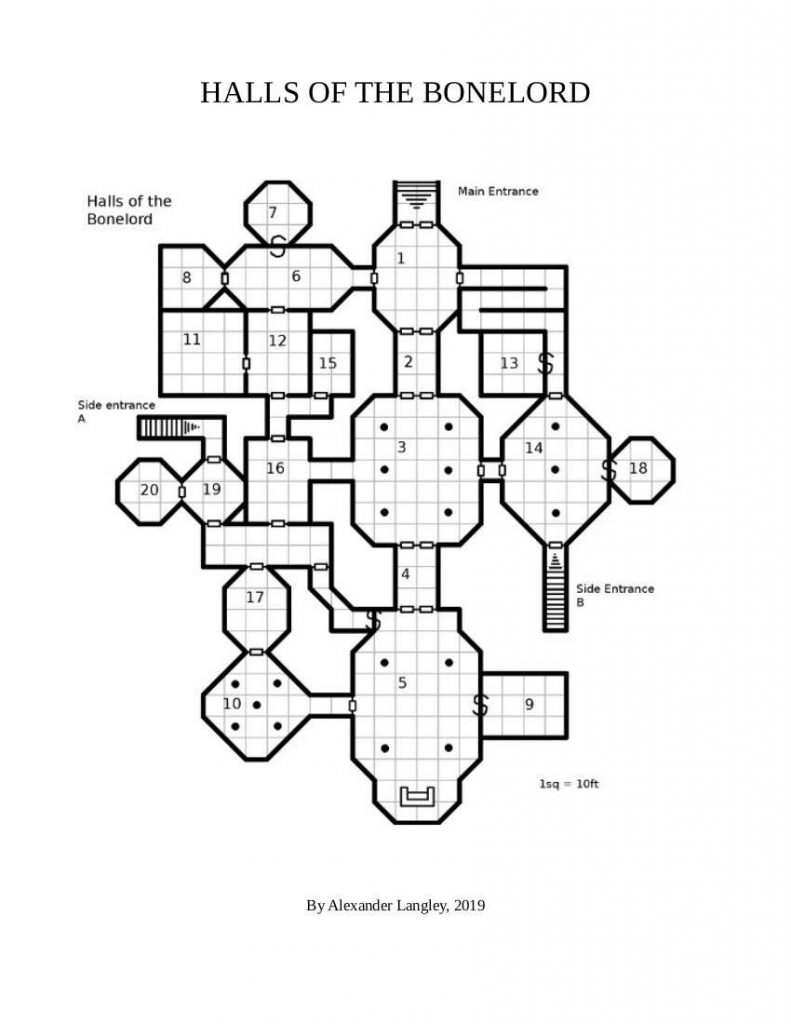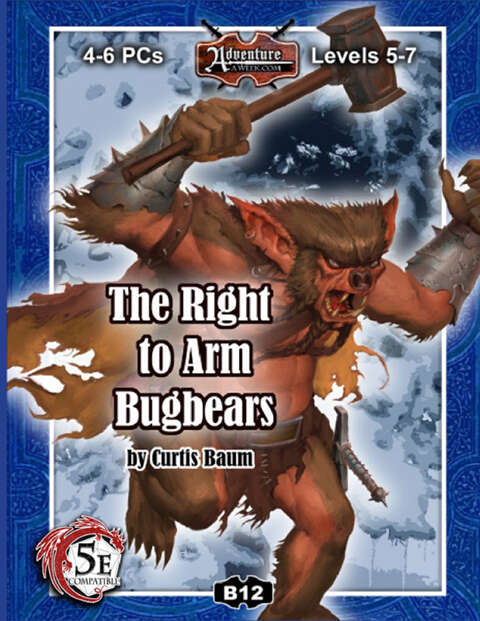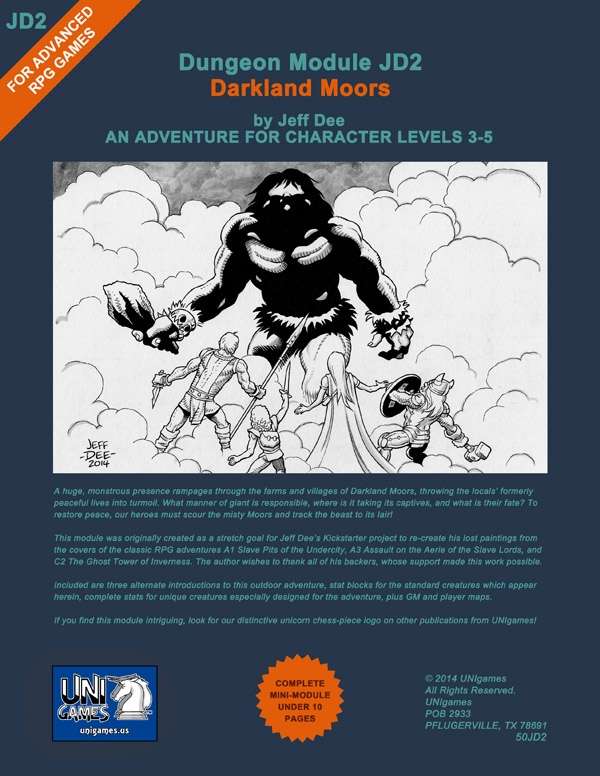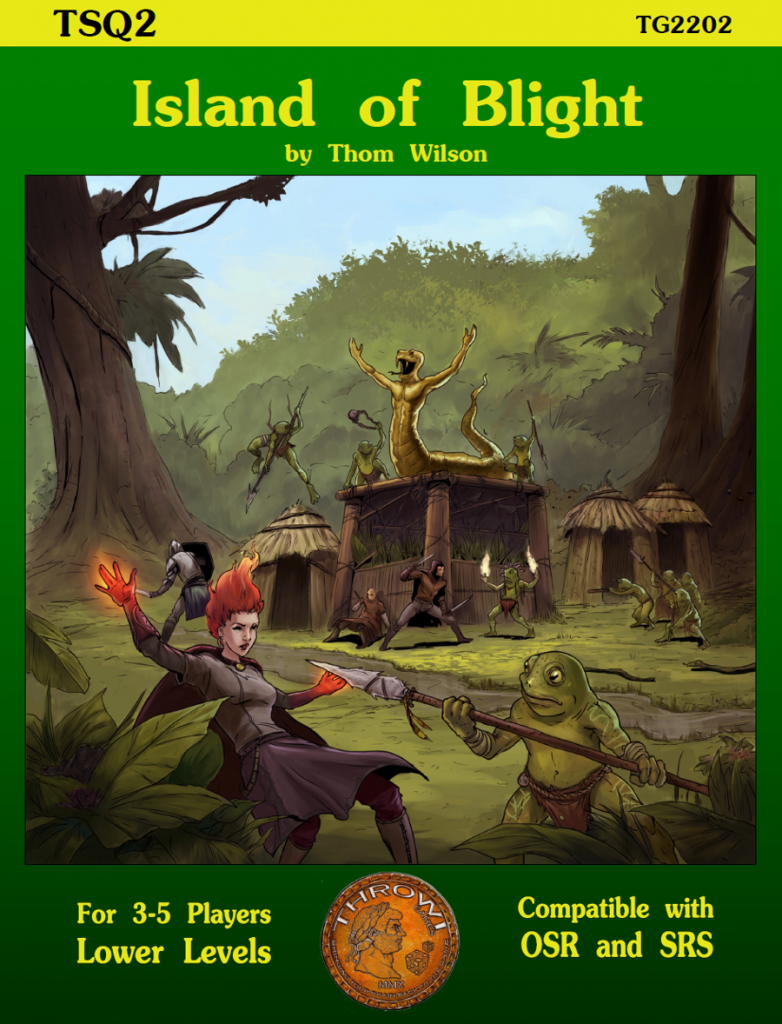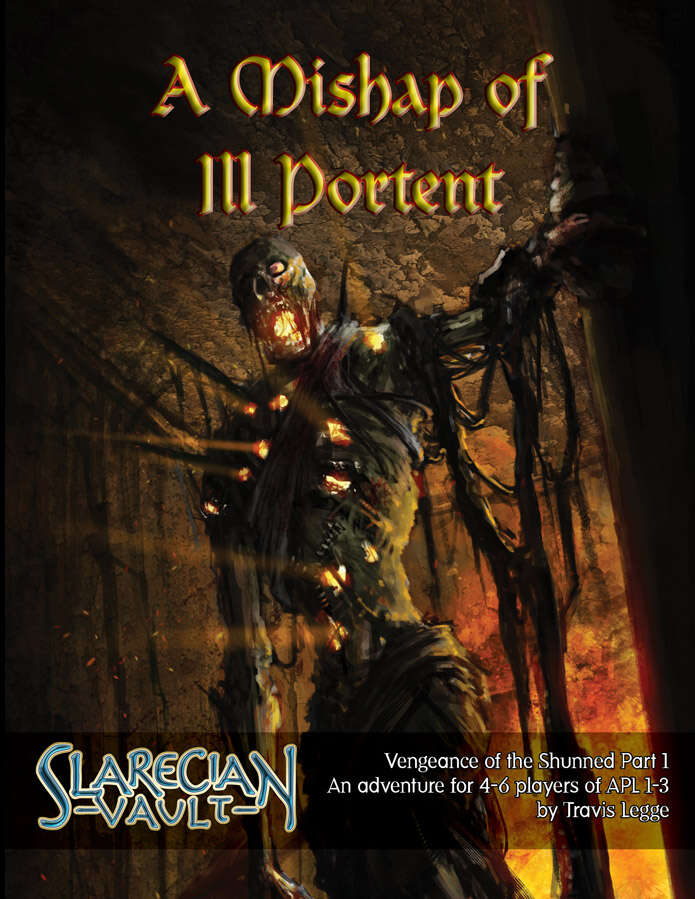
By Travis Legge Self-published 5e Levels 1-3
While the characters shop in the marketplace of a small village, a thunderous boom interrupts the peaceful commerce. A large plume of smoke rises from the outskirts of town, and the locals rightly determine that the source of the blast must be the home of a local wizard named Tsendur. Investigating, the party discovers that something terrible and powerful has been stolen from the old wizard that threatens to unleash the power of a long dead Titan and endanger every life on Ghelspad!
This 25 page adventure features a six room tower, on fire, described in three pages. It probably takes place in less than two minutes. It is more like the inciting event to a new adventure path (which is what it is) than it is an adventure. But at least you gain a level after those 100 seconds! The writing is poor, but it does make good use of fire, exhaustion, and terrain rules to create a little scene that’s different than most.
While in town you hear an explosion and see a small home with attached three-level tower on fire in a major way. Unknown to the party, the wizard on the top floor is trapped and unconscious under rubble and will die in 20 rounds. Thus, the time limit, which the party is unaware of. “That’s Franks house” is, I think, the extent of the urgency conveyed. This amounts to a hidden rule and those are typically not good things in D&D. Knowing there’s someone in the house, trapped, allows for more tension as the party makes decisions balancing risk and reward. It’s a small thing to add someone yelling that they say Frank go in the house, but it’s a key issue. The town guard is, of course, otherwise occupied preventing panic. I get it, but why have a town guard at all then? Just put a little work in to your pretext hook people, it’s worth it.
Likewise the use of skill checks in this adventure is poor. DC 14 to notice figures in inside the house. DC 12 to calm someone … to say they say figures, and so on. It’s rolling dice for the sake of rolling dice, for trivia. “Make a DC 10 check to talk across the room” or “Make a DC 12 to tell the sun is shining.” There’s a right way and a wrong way to do a skill check and this thing is absolutely engaged in the wrong way. (ok, Calming someone might be ok, it’s the “trivia” aspect that gets me, every time.)
There’s not a lot of read-aloud, but what there is has an italics font, never a good idea for long sections of text; it impacts readability. It also refers to the party in third person: “While the structure is largely intact as the characters first come to the scene, the fire is quickly spreading.” Uh, ok, so, no effort at all then? THis lack of effort continue to some of the editing: in one of the rooms it looks like there’s meant to be some zombies, but its never mentioned, just some scaling guidelines to include +1 zombies if the party is tough. So, not an editor but rather a copyeditor? Either the text is missing or its unclear, both jobs for our editor. And a good one would have perhaps pointed out that spending a bunch of your word budget (three pages in 25 …) describing the door situation in EVERY SINGLE ROOM is perhaps duplicating what the map shows? But, that’s an editor and not a copyeditor.
Putting all of this nonsense aside, Travis is trying to create a situation in which there’s a burning building that the party needs to deal with. His support of this is admirable. There are rules for the smoke and terrain. There are smoke inhalation rules handled via the exhaustion levels. There’s locked doors to deal with. There are fire-immune zombies to deal with. And, of course, there’s the trapped wizard. Putting out the fire is also handled, including a bucket brigade.
He’s done a good job by layering things to make the 90 second adventure an interesting little problem to solve. The multiple obstacles, the appeal to common techniques are all good. He’s also got a series of maps showing how the fire spreads minute after minute. Maybe a summary sheet of the rules, in a less verbose context, along with the fire spread map, all on one page, would have been nice. Still, it takes the concept of the “all session long fight” to a place that is WAY more interesting thAn it was in 3e or 4e.
It’s a decent little ENCOUNTER if you can get past the little issues and make the timer better understood. It’s also 25 pages for a single encounter, and the beginning of a new adventure path. I get that people expect a certain page length, but how far can you stretch things? 25 pages at least …
This is $3 at DriveThru. The preview is six pages and doesn’t show you anything of the adventure, making it absolutely worthless. I don’t care about the fucking art or backstory, I care to get a preview of the content I’m actually buying to use: the encounters.
https://www.drivethrurpg.com/product/281612/A-Mishap-of-Ill-Portent?1892600

